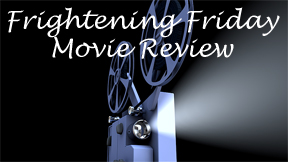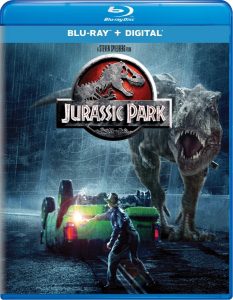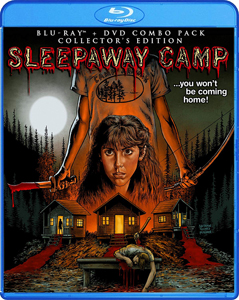“Sleepaway Camp” (1983) is one of the most prominent lakeside summer camp slasher flicks in the wake of “Friday the 13th” (1980), and refreshingly its tone is nothing like “Friday the 13th.” If it were made today, maybe by Robert Rodriguez teaming up with David Robert Mitchell, we’d say it’s a masterful homage/parody to the style of the time. Writer-director Robert Hiltzik’s film is often technically bad, sometimes aimless, and inexplicably engrossing.
Tone deaf, but in a good way
It has the Afterschool Special traits of stiff acting and fades-to-black as scene transitions. I suspect the screenplay – in terms of thematic resonance – is possibly brilliant, but on a scene-by-scene basis it’s mostly tone-deaf. The progression of these scenes is nonetheless mesmerizing as “Sleepaway Camp” gradually finds its identity as a lesson about how it’s wrong to bully the weird kid.
In this case, it’s Angela (Felissa Rose), who is mostly in a fugue state. We know the reason for this from the opening grabber: Eight years prior, her dad and brother were killed in a boating accident near Camp Arawak.

“Sleepaway Camp” (1983)
Director: Robert Hiltzik
Writer: Robert Hiltzik
Stars: Felissa Rose, Jonathan Tiersten, Karen Fields
She was adopted by her aunt, and is now attending that camp along with her cousin Paul (Christopher Collet). Paul’s friend Ricky (Jonathan Tiersten) also becomes an ally and boyfriend. Although he gets a bit handsy for Angela’s tastes, he’s basically a solid guy.
The lead mean girl is Meg (Katherine Kamhi). She developed breasts over the winter, but unlike Lindsay Lohan’s Hermione in that classic “SNL” skit, she is well aware of how her looks affect the opposite sex.
An undeniable impression
When watching “Sleepaway Camp,” I was thinking that the performances are bad, but afterward, I revise that sentiment, because all of these characters made an impression on me. The best, and most important, performance comes from Desiree Gould as Aunt Martha. Gould gives an alien-like turn that doesn’t match anyone else’s work. Ultimately, that’s a purposeful clue.
I’m not sure about Hiltzik’s thinking behind other choices. For example, camp cook Artie (Owen Hughes) is a pedophile, and he’s the first to be targeted by the unknown serial killer. That’s a straightforward portrayal. But more strangely, kitchen worker Ben (Robert Earl Jones, James’ father), chuckles about Artie’s open pedophilic comments. Is this tone-deafness or stage-setting?
Regardless of the intention, the oddities mostly work in “Sleepaway Camp’s” favor. Another example is young camp counselor Judy (Karen Fields) asking 50-something camp owner Mel (Mike Kellin) out on a date.
Even a long baseball game segment is not without value, as it sets up tension in the camp and also showcases the now-absurd 1980s fashions such as short shorts and cutoff shirts on the guys – today an outdated yet clear stereotype of how gay men might dress. The film asks us to think about sexuality even though the steamiest scenes are run-of-the-mill makeout sessions.

The famous surprise (Spoilers)
(Spoilers follow.)
The reveal in the final frames makes everything that came before it even better, as we learn “Sleepaway Camp” is a tale of forced gender dysphoria on a child. It’s visually creepy how the last image composites a teen boy’s naked body with a female face with a monstrous expression on that face.
My initial reaction was “That’s creepy, and a good twist, but what’s the point?” Someone’s gender being the opposite of what we thought is weird, but it’s not scarier than a string of vicious murders.
Then I kept thinking about “Sleepaway Camp” and decided it’s possibly way smarter than what it shows on the surface. I don’t know if this is on purpose or by accident, but I wouldn’t be surprised to learn it influenced modern body horror filmmakers like “It Follows’ ” Mitchell.
It’s a trashy slasher in form, lacking the cinematic artistry of even “Friday the 13th,” and I can imagine many viewers seeing it as garbage. “Sleepaway Camp” is not technically superior to the templated slashers of the era, but its messiness and weirdness make it far more interesting to talk about.

